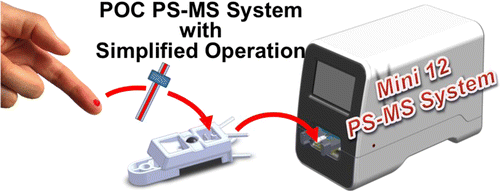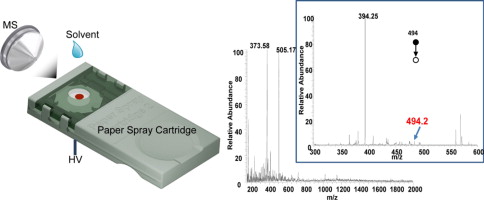Hand held solutions in medicine increase dramatically. Now is the mass spectroscopy thanks to the effect of nanotubes on the paper for analysis. The research was carried out in Purdue University and in the Indian Institute of Technology Madras and published in the journal Angewandte Chemie.
Those nanotubes coating mass spectrometers will represent a huge improvement on over the spot analysis, giving the results in the moment with better sensitivity and at lower prices.
Not only improve the detection but increase accuracy. The reason the paper to collect the sample is coated with carbon nanotubes. Under those circunstances the voltage required was 1,000 less but the signal is sharper and allowing to detect more molecules present in the sample.
This is a great improvement. As a result of this the power required is reduces drastically reducing battery size and cost. The system become hand-held: it is lighter, cheaper and smaller capable to be miniaturized. There are already several generations of miniature mass spectrometers. The latest generation is the “Mini 12” published in the journal Analytical Chemistry.
The National Science Foundation-funded study used an analysis technique developed by Cooks and his colleagues called PaperSpray™ ionization.
The technique es as follows: Wipe an object or place a drop of liquid on paper wet with a solvent to capture residues from the object’s surface. A small triangle is then cut from the paper and placed on a special attachment of the mass spectrometer where voltage is applied. The voltage creates an electric field that turns the mixture of solvent and residues into fine droplets containing ionized molecules that pop off and are vacuumed into the mass spectrometer for analysis. The mass spectrometer then identifies the sample’s ionized molecules by their mass.
Up to now it has been used for molecular imaging for cancer diagnostics and surgery; therapeutic drug monitoring; testing for biomarkers in urine; and the identification of food-borne pathogens, bacteria, pesticides and explosives residues.



